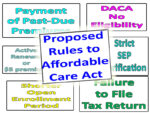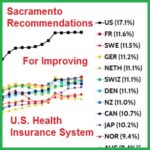The explanation of the rule changes by CMS is peppered with terms like “protect consumers”, “stable marketplace”, “reduce adverse selection”, and “improve risk pool.” However, the individual and family market has been very stable for many years. I have not heard of any California health plans getting sick, going bankrupt, or dying because they could not get health care.











